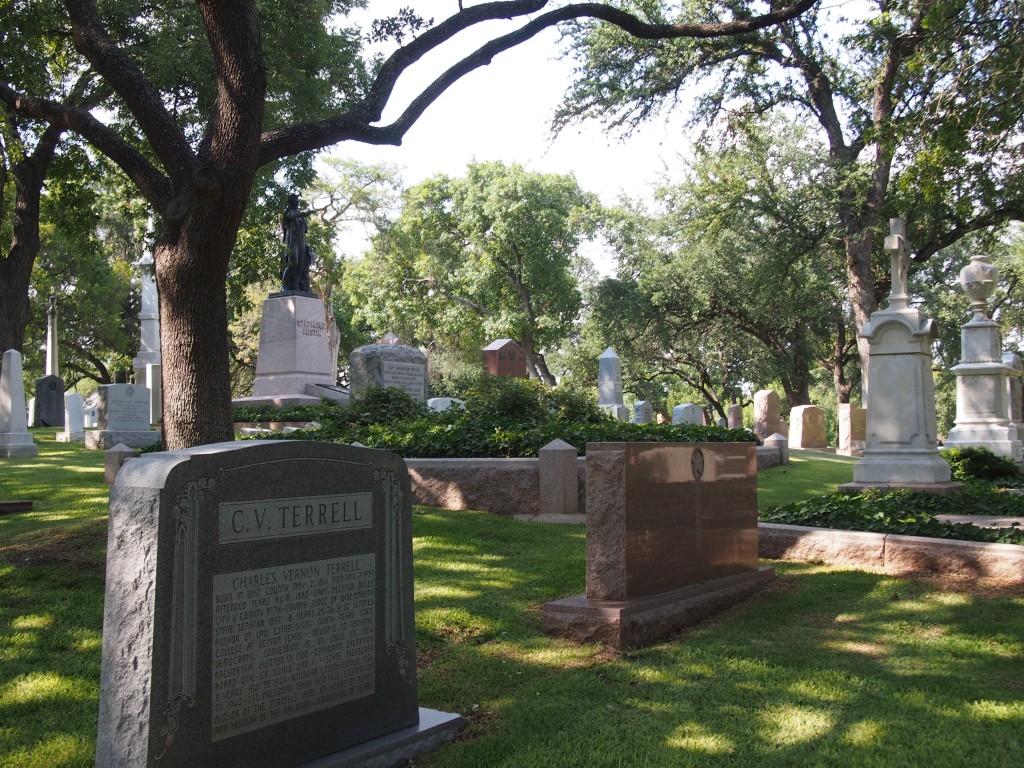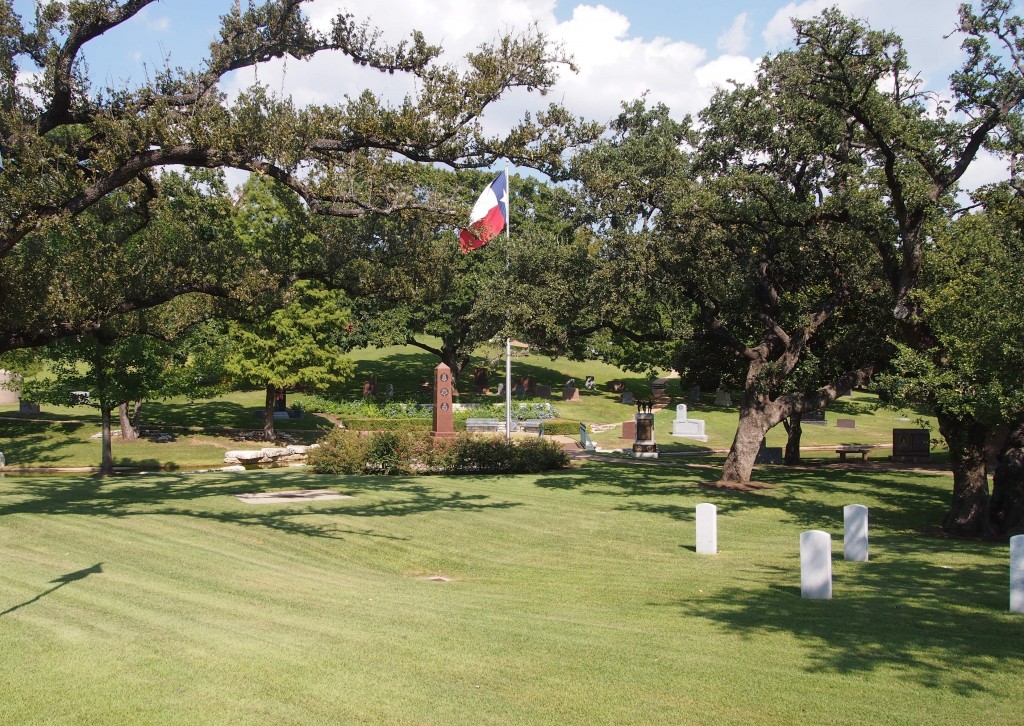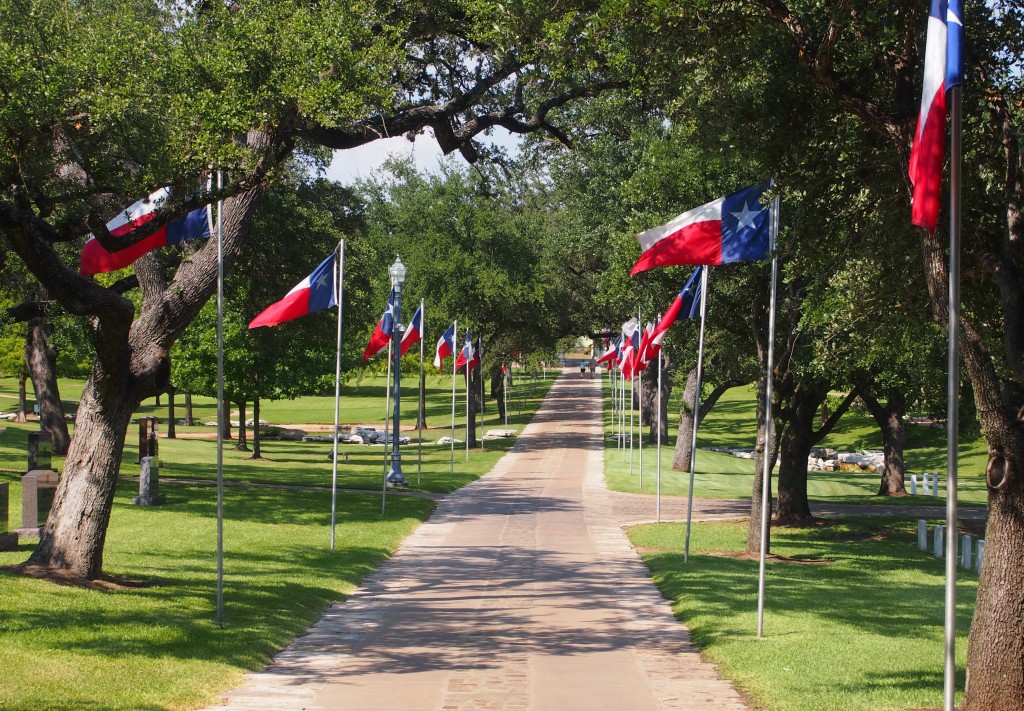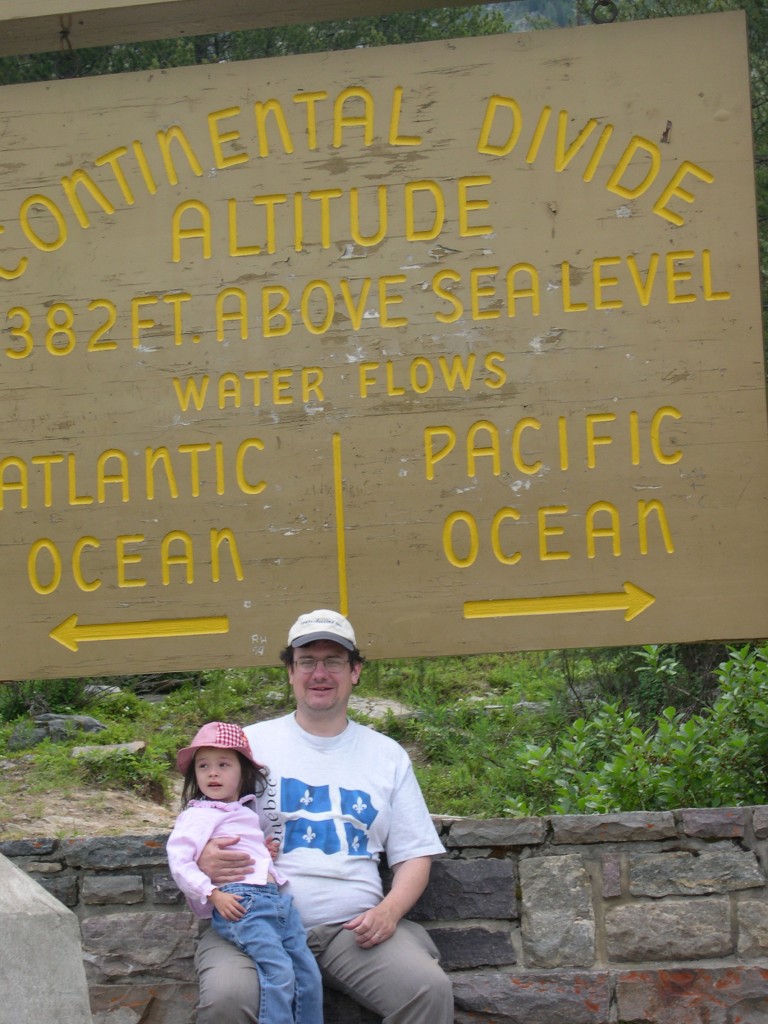The Texas State Cemetery, which is in Austin east of I-35 but still not that far from the capitol, is a lush patch of mildly sloping land, artfully landscaped, graced by a variety of trees, a few water features, narrow roads, many Texas flags, and lots of monuments of different sizes and shapes, as you’d except from a good cemetery. Jay and I stopped by the State Cemetery on the afternoon of Friday the 13th under partly cloudy skies, and during the usual high heat you’re going to encounter in September in Central Texas. Fortunately, there was also a good bit of shade.

 One thing the cemetery did not have, at least when we were there, was many other visitors – maybe a four or five all together, and I think at least one of them worked there. Then again, that’s not so strange. I often find myself alone – among living people, anyway – even in large cemeteries. The only recent exception to that has been Arlington National Cemetery.
One thing the cemetery did not have, at least when we were there, was many other visitors – maybe a four or five all together, and I think at least one of them worked there. Then again, that’s not so strange. I often find myself alone – among living people, anyway – even in large cemeteries. The only recent exception to that has been Arlington National Cemetery.
The invaluable Handbook of Texas tells us that the 22-acre Texas State Cemetery “is divided into two plots. The smaller one includes some 234 marked graves of more or less prominent men and their wives, including… representatives of every department of state government and every period of state history. The larger plot contains the marked graves of some 2,047 Confederate veterans and their widows, who died after 1889 in the Texas Confederate Home and the Confederate Woman’s Home.”
The cemetery also still has room for expansion. I understand that most state officials can be buried there if they so desire, and the legislature can offer burial in the cemetery to whomever it wants. That would account, for example, for the stone dedicated to Wille James Wells, “El Diablo,” 1906-1989.
I hadn’t heard of him before. His stone says, “Played and managed in the Negro Leagues, 1924-1948. Began his career with the St. Louis Stars and became baseball’s first power hitting shortstop… He was best known for his aggressive play [hence the nickname]. During his career he compiled a .392 batting average against Major League ballplayers. In 1997, Willie Wells was inducted into the National Baseball Hall of Fame…” Wells’ connection to Texas isn’t obvious from the stone, so I looked him up, and it turns out he’s native to Austin.
Roads run through the cemetery, making a T shape. The formal entrance to the grounds is at the bottom of the T. According to Wiki at least, the stem of the T shape is part of Texas 165, which also includes part of a side street that borders the cemetery. It isn’t clear from the text whether the rest of the T also counts as Texas 165, but never mind.
 This is the view looking north, past the top of the T. Whatever you call it, the road is abundantly lined with Texas flags.
This is the view looking north, past the top of the T. Whatever you call it, the road is abundantly lined with Texas flags.

